Sunstones are the greatest treasure for archaeology, paleontology, botany, and geology. They allow you to look at the world in a new way, to learn previously unknown facts about the evolution of plants and animals, and to imagine the Earth before our era. By peering into the golden depths of yantar.ua sunstones, you'll embark on a unique voyage that allows you to visualize the Earth as it existed before our era—a window into the past that's both mesmerizing and enlightening.
For millions of years, the hardened resin carefully preserved various objects - from petals and bark particles to arthropods, reptiles, and even birds. What were the most amazing finds in amber? Our article will tell you about it.
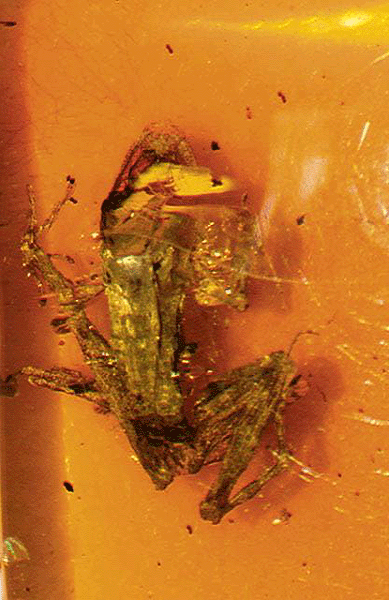
Frog trap
Cabochon - founded by a miner in the state of Chiapas (Mexico). After cleaning the pebble, the man saw a tree frog inside, the length of which was only 1 cm.
G. Karbot from the Institute of Natural History and Ecology believes that the amphibian belonged to the Craugastoridae family. However, the creature imprisoned in the gem is much older - according to preliminary estimates, it lived in the Oligocene epoch (33.9-23.03 million years BC). This conclusion was made on the basis of the dating of the geological layers in which the precious stone was located before the excavation. To more accurately determine the age of the prehistoric relic, the biologist planned to drill a hole in a piece of petrified resin and conduct a comprehensive analysis. Animals in amber are not prone to decay, so the researcher could even get a part of the DNA! However, it is impossible to do this now, because the cabochon is in a private collection.
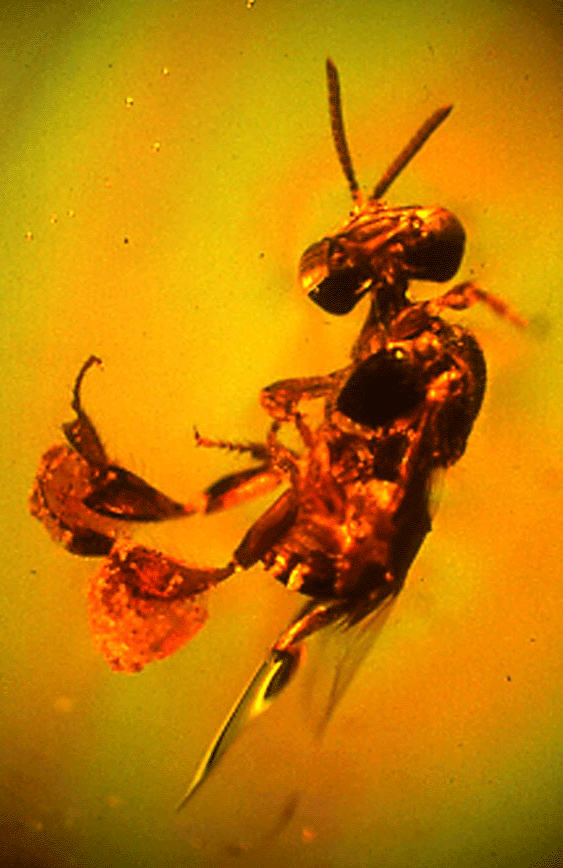
The ancestor of all bees
Unlike the predatory wasp, the bee that feeds on pollen is a fairly young species. Previously, it was believed that it arose no more than 45 million years ago when conifers began to replace angiosperms. But these beliefs were shaken after J. Poinar (a zoologist from the University of Oregon State University) reported on insects extracted from a piece of amber. The find from a mine in the north of the Republic of Myanmar dates back to the Cretaceous period.
The hymenoptera, which was named Melittosphex burmensis, has typical features of both bees and wasps (in particular, it has thin hind limbs). This was established due to the fact that the fossil is very well preserved - even through the thick gem, individual hairs on the chest, abdomen, and head, as well as transparent wings, can be seen.
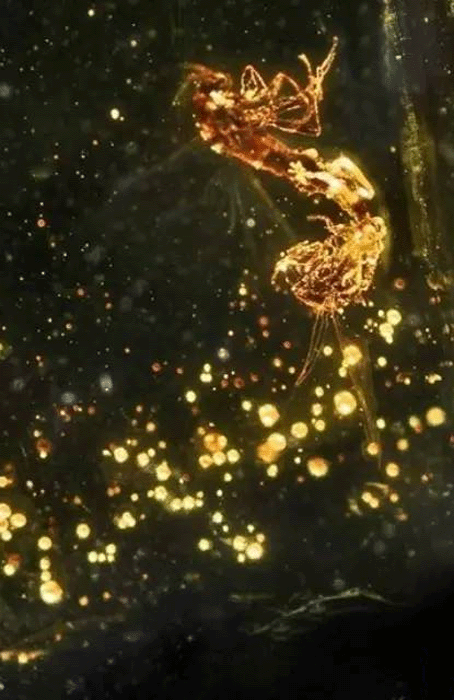
Love that froze forever
Little is known about the tiny Scatopsidae midges that feed on decaying vegetation. Meanwhile, this family includes insects that got bogged down in resin during mating 125 million years ago. The study of the relics made it possible to reveal some evolutionary patterns in the development of dipterans, and work on the gem is still ongoing.
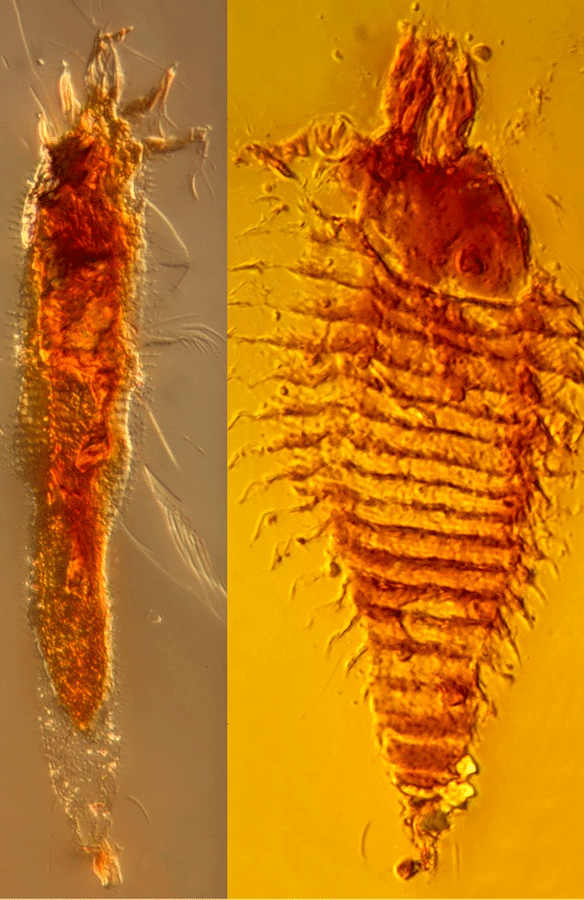
The oldest insects in amber
However, all these pieces of fossilized resin seem quite "young" compared to a cabochon discovered in 2009 in a coal mine in Illinois. It is 230 million years old, but the structure of the precious stone is no different from the others.
However, head mites (Eriophyoidea) and one primitive fly froze inside the gem. They are almost no different from modern ones that parasitize angiosperms. Until now, the oldest amber with arthropods was dated to the Lower Cretaceous period (up to 130 million years), but the unique find extended the history of insects almost twice. The discovery shows that they lived and flourished even in the Upper Triassic period.

Host and parasite - together forever
Strepsiptera, or representatives of the genus Fanoptera, are very strange creatures. They are able to exist only inside another insect, feeding on its juices. Such a life cycle may seem doomed to failure, but in fact it is quite successful. And the proof of this is the solar gem from Southeast Asia. A prehistoric fly and a parasite protruding between the segments of its cephalothorax are clearly visible in the transparent gemstone.
Previously, it was believed that the first fan wings appeared in the Middle Cretaceous period (up to 39 million years BC). This was confirmed by arthropods frozen in Dominican and Baltic amber. But recently, another similar insect, named Kinzelbachilla ellenbergeri, was found in a cabochon from Myanmar. Its approximate age is 100 million years.
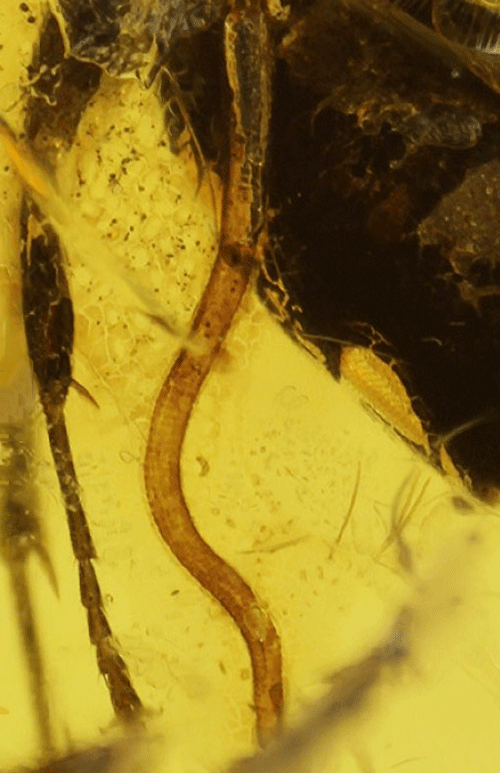
Mushroom predator
The inclusions in amber are very diverse - take at least a precious stone extracted from a quarry in the south-west of France. A. Schmidt and other scientists from Humboldt University (Berlin) confirmed that the gem contains a particle of a fungus that feeds on nematodes and the remains of its victims.
The mycelium of representatives of this family has a special structure that allows them to catch microscopic worms and insects. When the trapped creature dies, the fungus grows through it, extracting all the nutrients. This is a very interesting process - but due to the fact that eukaryotes do not have a shell or skeleton, they quickly decompose immediately after death. This means that it is almost impossible to study the evolution of such organisms. In addition, predatory mushrooms live in the soil, which makes their chances of getting into a drop of resin minimal. That is why mycologists were so interested in the find.
And this is far from all the discoveries - but how many more are ahead! That is why there are so many people willing to buy amber with inclusions. If you are also interested in such gems, our online store will help you - here you will find unique precious stones, the authenticity of which is confirmed by certificates.

